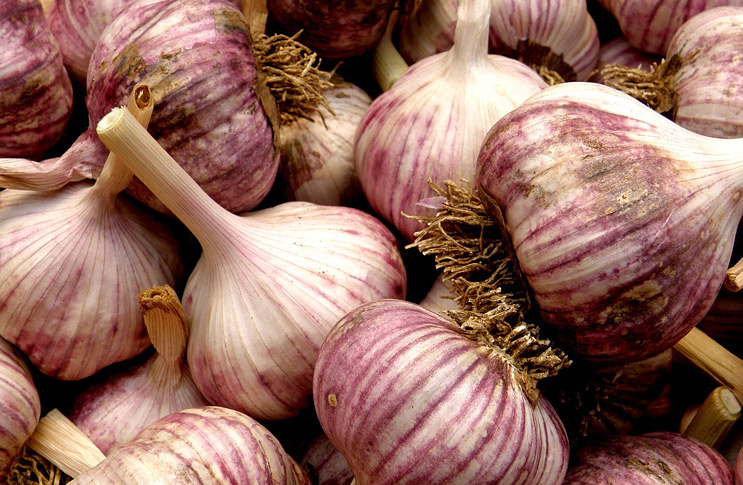 Since ancient times, garlic has been present in human nutrition, the cuisines of many countries of the world cannot do without it, and in the dishes of Slavic peoples it occupies a leading position. In almost every household plot, this healthy, aromatic culture is grown, giving it the necessary attention.
Since ancient times, garlic has been present in human nutrition, the cuisines of many countries of the world cannot do without it, and in the dishes of Slavic peoples it occupies a leading position. In almost every household plot, this healthy, aromatic culture is grown, giving it the necessary attention.
To get a decent harvest of garlic, you must follow certain rules of care. One of its components is spring and summer top dressing.
Content
Dates of spring and summer dressing
Most gardeners in plantings, most often, have two types of garlic: winter and spring. Winter varieties are planted in the fall, and spring varieties in the spring. Shoots of winter garlic appear much earlier - in early spring. Both species need additional nutrition, since in spring the plant gains strength, goes into growth and needs additional nutrition. Just the first top dressing of winter plantings is carried out earlier. The schedule will help to determine the timing of the application of fertilizing:
- No. 1 - emergence of seedlings;
- No. 2 - 2 weeks after feeding No. 1;
- No. 3 - the period of formation of the head (2-3 decades of June).
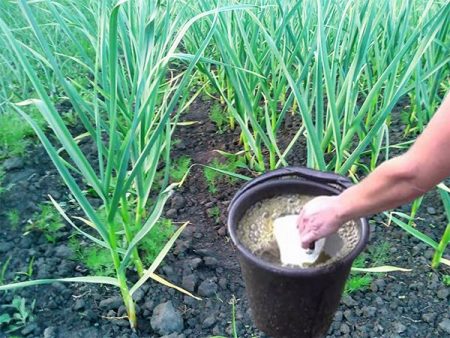
How to fertilize with minerals
The development of garlic is worse on too moist soils, it does not tolerate stagnation of moisture, so it is recommended to combine watering and fertilizing - the soil is not moistened and the absorption of nutrients is better.
On poor and heavily depleted lands, it is good to use ready-made complex mineral fertilizers with the addition of humates. Humates can be fed under the root and on the leaf.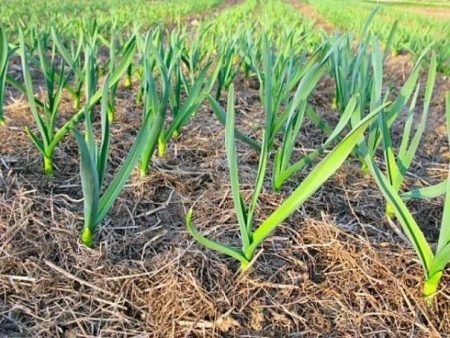
What to feed
- Top dressing No. 1 activates leaf growth, therefore fertilizers with nitrogen are used - urea (ammonium nitrate) - 15g / 10l / 3m².
- Top dressing No. 2 is carried out at a time when phosphorus and potassium are necessary for the formation of the underground part - a solution of nitrophosphate (30g / 10l / 3m²). Make feeding in advance because of the long periods of decomposition of minerals.Important! Nitrogen feeding is not carried out after mid-June - the formation of the head begins.
- Top dressing No. 3 is carried out after mid-June. The necessary components are phosphorus and potassium. Nitrogen in this period leads to increased leaf growth and darting, which affects the size of the underground part. Fertilizer composition: simple superphosphate (30g / 10l / 2m²) and potassium sulfate (15g / 10l / 2m²). The dissolution of superphosphates is better in hot water, and the prepared solution is recommended to withstand a day.
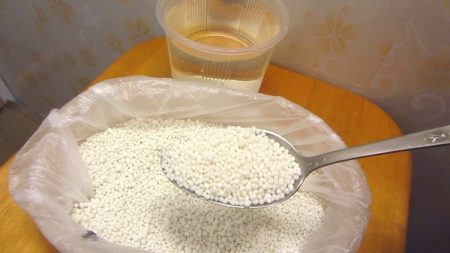
It is allowed to add ash to the soil with an interval of 2 weeks or to pollinate the tops with it as additional individual dressings.
Organic Feeding
Organic food is used everywhere - it’s easy to prepare, by choosing the appropriate option, it’s easy to use. It is rich in nitrogen, necessary for tops, and contains other trace elements that help grow large, high-quality heads. The advantage of such top dressing is also that they do not accumulate in the soil and in the crop.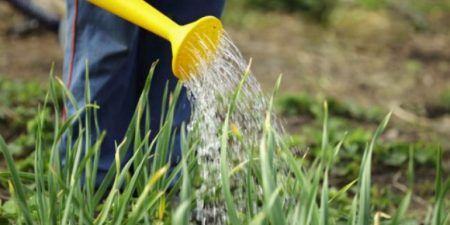
Organic dressing options
- Mullein infusion is prepared from manure and water in a ratio of 1: 5 for 2 weeks. The process must be regulated by periodic mixing of the components. The infusion is diluted 1:10 and watering is carried out at 8-10 liters per 1 m². Ready-made fertilizer, for example, Radogor, is sold in stores.
- Wood ash is used in dry form and in infusion. Dry ash is scattered between the rows of garlic during feeding No. 2 or watering is carried out with infusion (200 g per 10 l). Ash in any form helps to cope with yellowing of tops, disinfects the soil.
- Extraction from compost enriches the soil with nitrogen, improving its fertility. Prepared from mature compost and water (1:10) for 3-4 days, constantly mixing. When settling thick, the infusion is ready.
- A solution of ammonia (ammonia), 25 ml per 10 l, is used for spraying and for watering, after the soil is loosened. The nitrogen contained in ammonia is needed by the plant, and the fumes of the drug are harmful to many pests. You can apply the entire growth period.
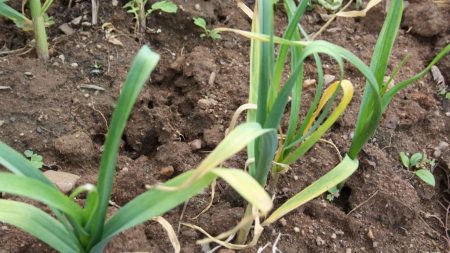
Folk ways of feeding
Those who grow garlic in themselves often use simple folk remedies for top dressing - they are always at home, not difficult to use and apply, inexpensive, do not contain chemistry, which is important.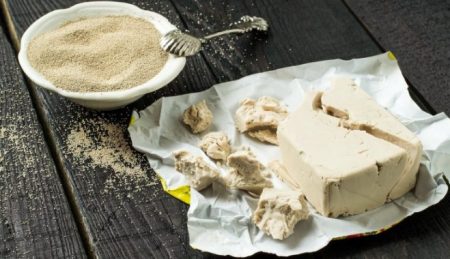
Folk dressing recipes
- A solution of edible salt (3 tablespoons per 10 liters) is used to accelerate growth, with yellowing and drying of the tops. The saline solution does not like the stem nematode, filamentous worms whose larvae winter in the soil and in the bulbs.
- A yeast solution supplies the plant with nitrogen and helps to build up the root system - dilute the yeast (100g) in 1 bucket of water (40 ° -50 °), stand for a day and water it, spending this composition on 3 m².
- Hydrogen peroxide in solution disinfects planting material from fungal infections, promotes active growth. Apply in the form of sprayings with a weak solution.
- Siderata (white mustard, beans, peas) are sown to enrich the soil in the beds with garlic. In the spring, the soil is dug up, at the same time organic matter is introduced and planted in rows of fertilizer plants, leaving space between the rows for planting garlic. When the grass grows to 20cm, they begin to plant garlic.
- The infusion of grass contains nitrogen in large quantities. For its preparation, crushed weed grass is taken - it is filled with a large capacity of 2/3 of the volume and added with water. The preparation takes about 2 weeks with constant stirring. The maturation of the grass indicates the maturation of the infusion. A diluted 1:10 infusion is used for nitrogen top dressing.
Timely top dressing in spring and summer ensures the harvest of large juicy heads of fragrant garlic, which retains its beneficial properties all winter.

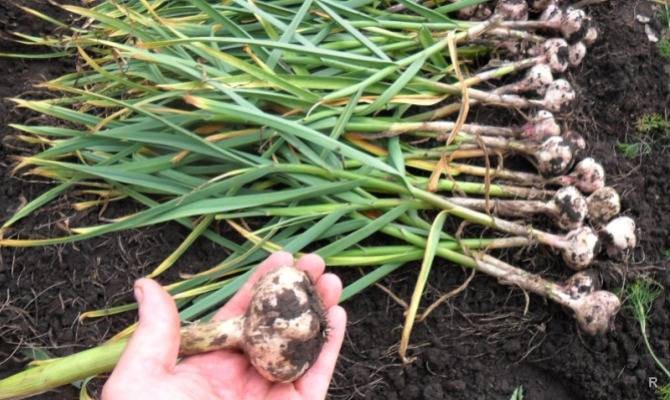
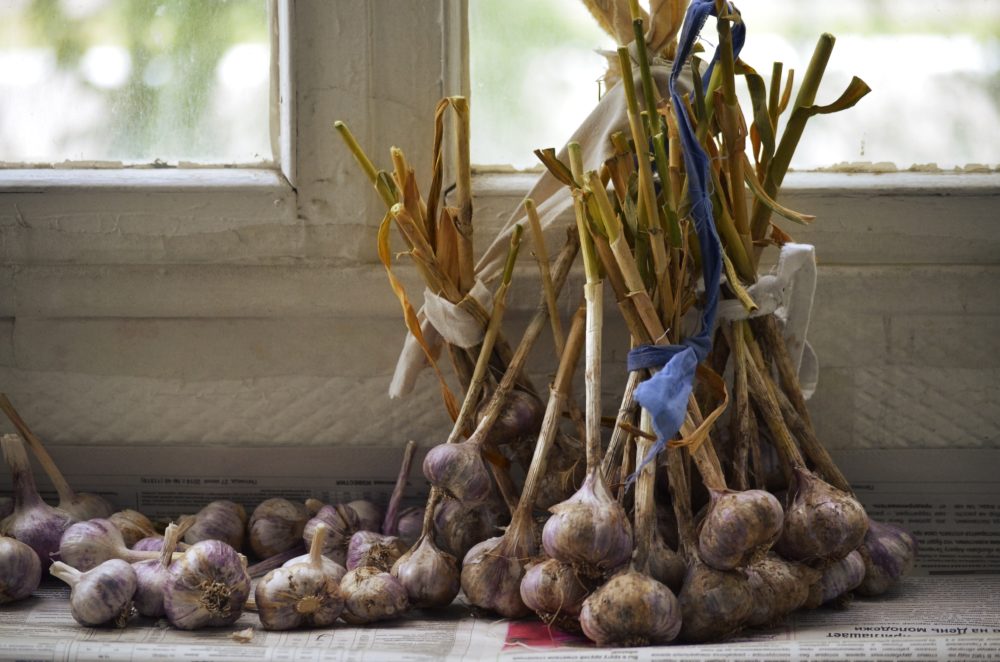
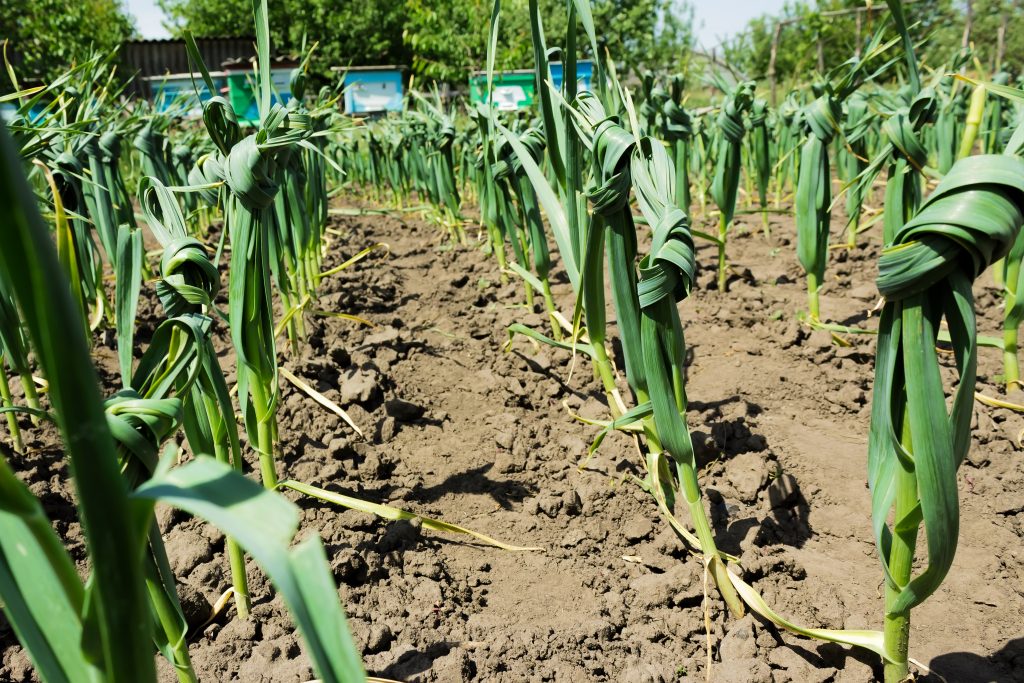
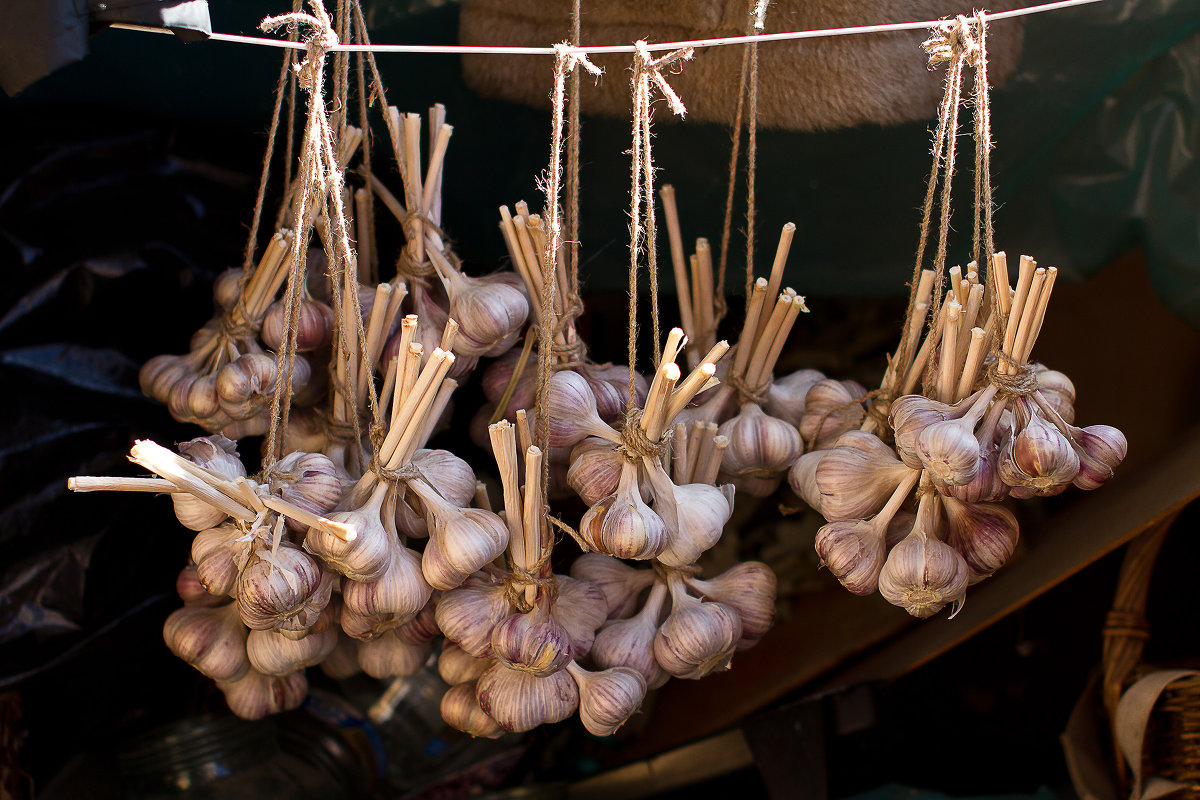 Methods for storing garlic in the winter at home
Methods for storing garlic in the winter at home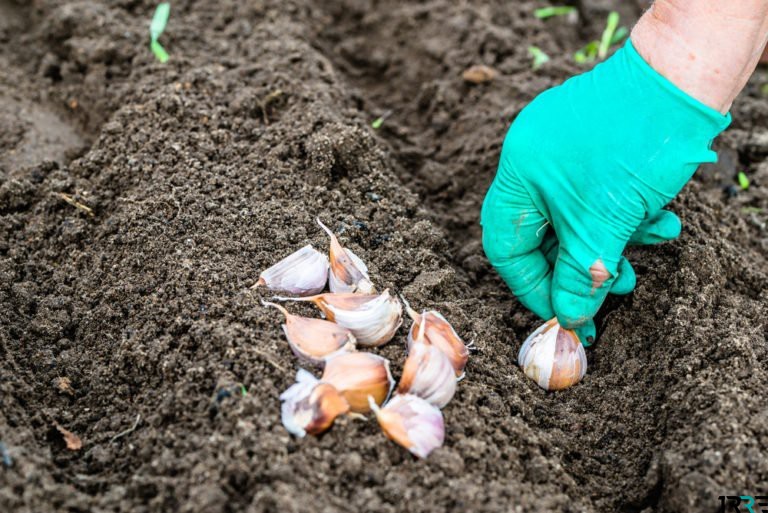 Processing garlic before planting in the winter: soaking garlic and tillage
Processing garlic before planting in the winter: soaking garlic and tillage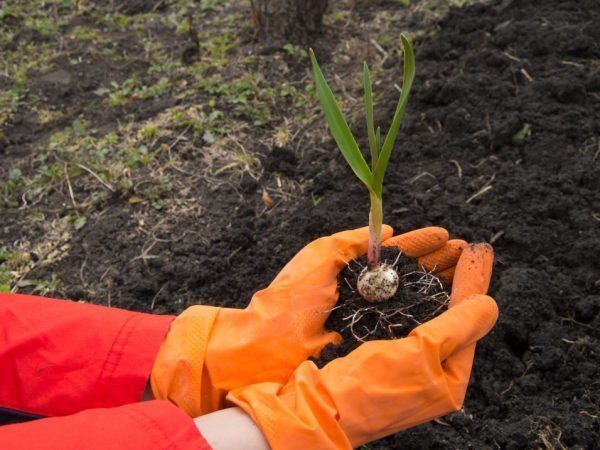 Fertilizers when planting garlic in the fall: how to fertilize the soil
Fertilizers when planting garlic in the fall: how to fertilize the soil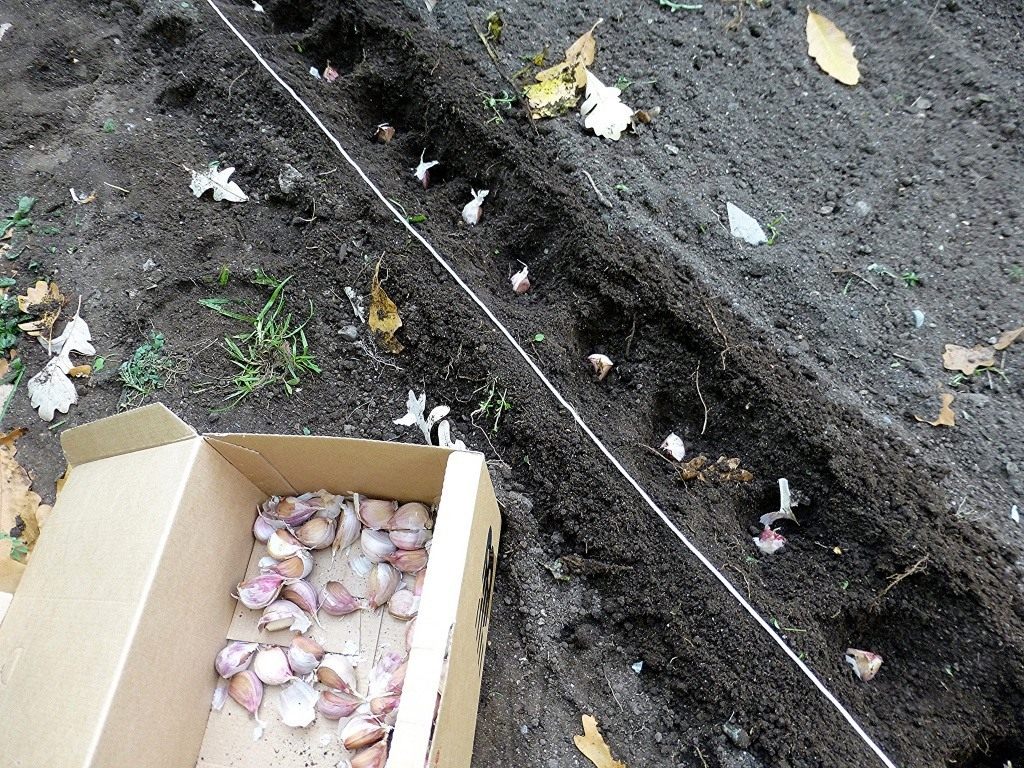 Features planting garlic in the winter in the fall
Features planting garlic in the winter in the fall